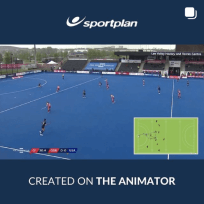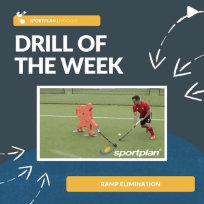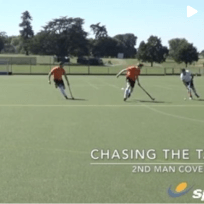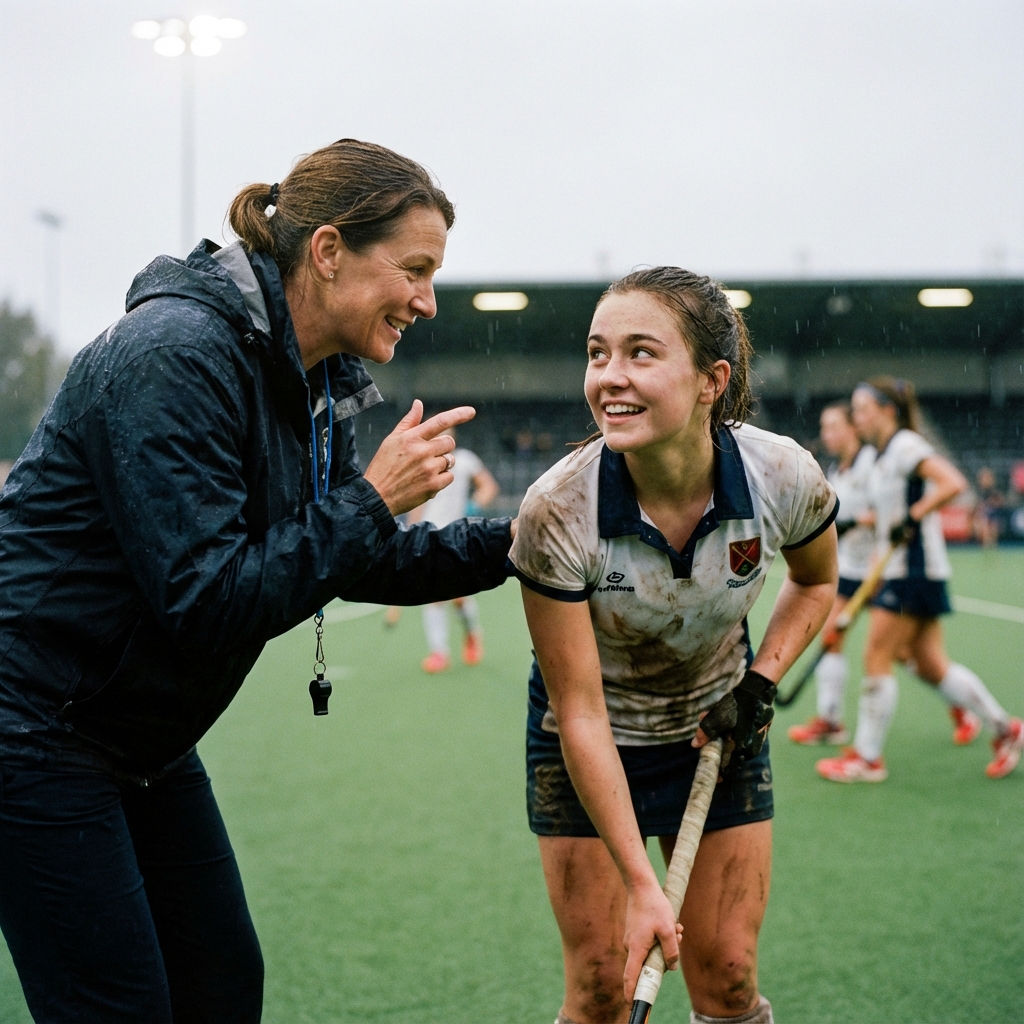Preparation:
You will need three attackers and two defenders to join in the exercise.
Exercise:
One of the attackers starts with the ball down the right side and turns in towards the goal at the base line.
One defender meets him on the D and needs to force the play up the base line or back out to the corner. Try to block the pass to the P-spot.
Attacker 2 needs to give a 45 or 90 degree option to attacker 1.
Attacker 3 needs to get to the P-spot or far post.
The keeper must communicate with defender 2 to either cover the 45 and 90 pass or fall back to cover the player on the far post.
Dependant on the decision the keeper will need to defend his near post and add additional pressure up the back line with defender 1 moving to cover the pass or defend his near post, but be ready to either attempt to cut the pass off or get over and defend the shot from the player on the far post.
The ideal will be to prevent the pass reaching the far post, or closing attacker 1 out completely.
If the ball passes to attacker 2 the keeper will have to decide who to defend based on his position as well as the position of the two defenders. Either the keeper rushes up to close down attacker 2 with the defenders cutting off the pass to attackers 2 and 3 or he hangs back with defender 2 putting pressure on attacker 2 and defender one moving over to the far post attacker. The keeper will need to be aware of attacker 1’s position to cut out the pass or defend the shot. Defender 1 can also stay on attacker 1 with the keeper having to cover the far post attacker. Where the ball has moved to attacker 2 the space to defend has now split to two areas between the attackers. Cut the ball off when passing through the space should be first choice to prevent a shot at goal.
Outcome:
We want the keeper to identify the vulnerable space and decide how to best defend it. The situation is going to differ during each pass, but as long as the keeper makes a decision and sticks to it. We want to see quick decisions made and plans executed, we don’t want to see keepers in two minds. If the keeper makes the wrong decision, so be it. On the next pass he can try another option, with experience he should start to up the winning average.
We also want to see clear communication coming from the keeper. Give clear concise instructions. Shouting “defend” is a form of communication, but has little to no affect. Call the defenders to a position or task. “Cover the far post player” or “I am on the base line attacker, cover the pass” will work better. Even better is an instruction such as “Peter, cover the far post player. Mark, I am on the base line attacker cover the drop pass.”
Irrespective of the decision made by the keeper, we need to assure them that should a goal be scored they are not to blame. If met with any situation where the attackers outnumber the field defenders, somewhere on the field a player was not doing their work. But we are keepers and we always try to please and keep the ball out. So we will try harder next time and in time our decisions made will improve and the better ones will come natural. Second nature.

in more ways than one




in more ways than one




From mandatory safety equipment to evolving tactical systems and player-centred coaching methods, field hockey is transforming. Here's what every coach needs to know for 2026.

The Netherlands made history at Paris 2024 with the first-ever golden sweep. Here's what coaches at every level can learn from their dominance.

The best coaches build more than skills - they build connections. Learn how trust-based relationships transform team performance.